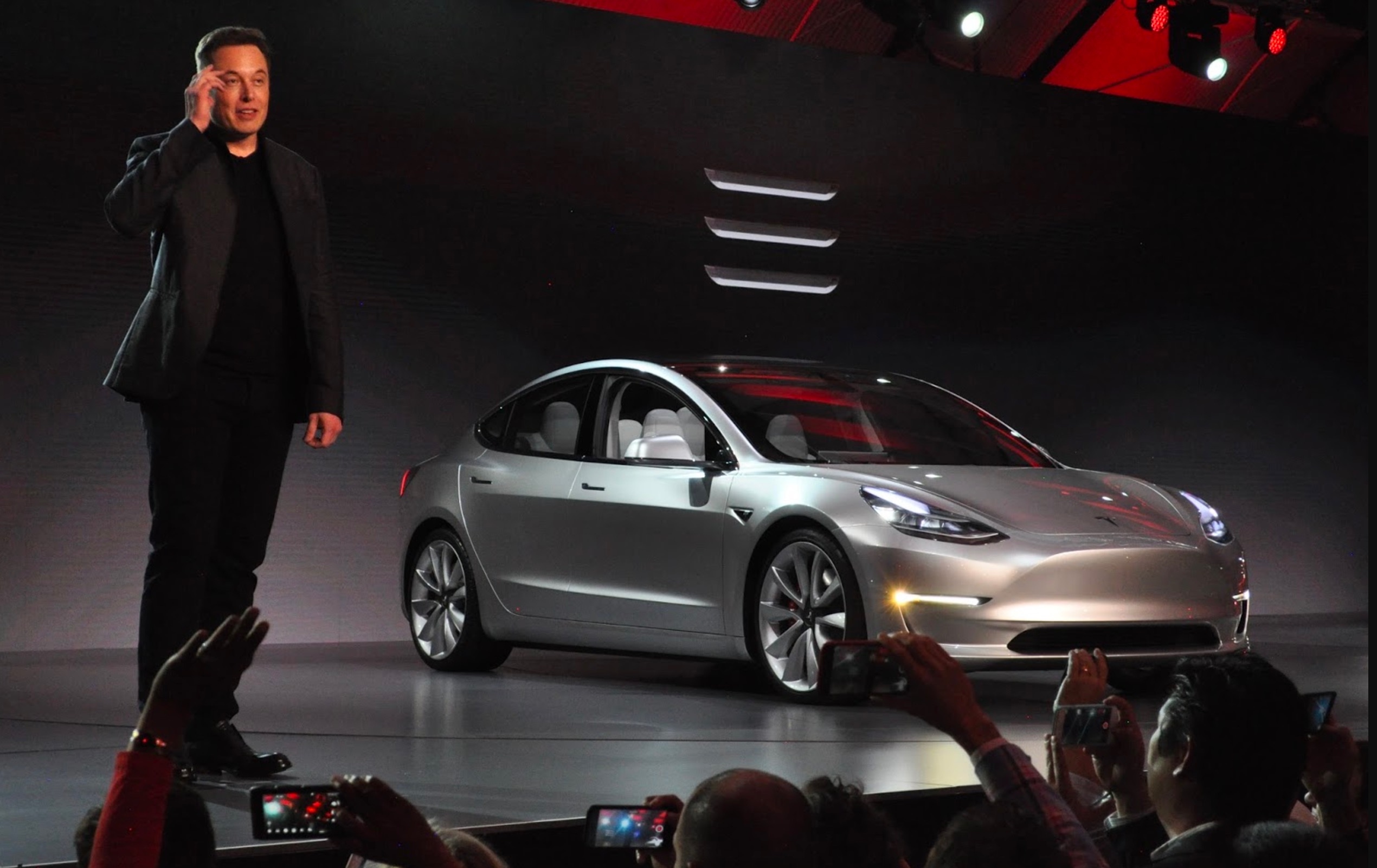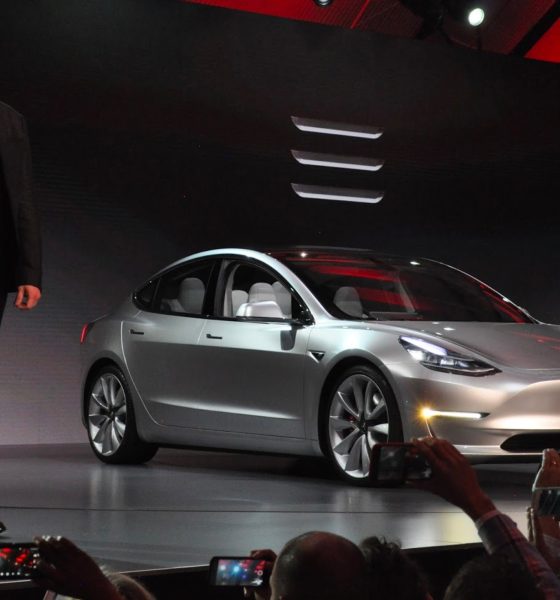

News
Tesla CEO Elon Musk meets with Thailand Prime Minister
Tesla CEO Elon Musk met with Thailand’s Prime Minister Srettha Thavisin on Thursday in New York City, where the two discussed a variety of topics.
The meeting was confirmed by Prime Minister Thavisin, who stated that he and Musk discussed topics including Tesla, SpaceX, and Starlink, all three of which are controlled by Musk.
“Met with @elonmusk and team during my trip to #UNGA in New York. We had a good conversation on @Tesla, @spaceX, and @starlink technology,” he said. “I am impressed with the advance the group has made for humanity, and we share a common view of the future for a cleaner world. We look forward to further discussions. Look forward to more inspirational successes of the #EV and #SpaceExploration breakthrough – for not only Thais but also the global community.”
Met with @elonmusk and team during my trip to #UNGA in New York. We had a good conversation on @Tesla, @spaceX, and @starlink technology. I am impressed with the advance the group has made for the humanity, and we share a common view of the future for a cleaner world. We look…
— Srettha Thavisin (@Thavisin) September 21, 2023
Tesla has been present in Thailand as an EV maker since last year when it launched the Model 3 and Model Y in the country, and reservations for the vehicles skyrocketed. The Tesla vehicles that are in Thailand are built at the company’s Gigafactory Shanghai plant in China, which is a major contributor to the automaker’s total production volume.
The first units were delivered in February of this year, and it marked an expansion of Tesla’s presence in Asia.
However, the country utilized Model 3 vehicles for its National Police Force in early 2020, and they are still being leased. The seven cars are set to operate as cruisers for law enforcement until 2025.
Tesla has been holding discussions with various countries regarding a new automotive plant, but it does not appear Thailand is one of those countries. Musk has a great relationship with many world leaders, and it is important to note that meetings with Prime Ministers, Presidents, and other government officials only help with brainstorming ways to make them more sustainable.
EVs are becoming more popular in Southeast Asia, and a recent report from Reuters shows that 6.4 percent of passenger car sales in Q2 2023 were electric vehicles.
This is up from 3.8 percent in Q1, and Thailand accounts for roughly 50 percent of those sales. Vietnam and Indonesia are behind Thailand, and BYD is the most popular automaker in the region currently.
I’d love to hear from you! If you have any comments, concerns, or questions, please email me at joey@teslarati.com. You can also reach me on Twitter @KlenderJoey, or if you have news tips, you can email us at tips@teslarati.com.

News
Tesla FSD V14.2.1 is earning rave reviews from users in diverse conditions
Tesla’s Full Self-Driving (Supervised) software continues its rapid evolution, with the latest V14.2.1 update drawing widespread praise.

Tesla’s Full Self-Driving (Supervised) software continues its rapid evolution, with the latest V14.2.1 update drawing widespread praise for its smoother performance and smarter decision-making.
Videos and firsthand accounts from Tesla owners highlight V14.2.1 as an update that improves navigation responsiveness, sign recognition, and overall fluidity, among other things. Some drivers have even described it as “more alive than ever,” hinting at the system eventually feeling “sentient,” as Elon Musk has predicted.
FSD V14.2.1 first impressions
Early adopters are buzzing about how V14.2.1 feels less intrusive while staying vigilant. In a post shared on X, Tesla owner @LactoseLunatic described the update as a “huge leap forward,” adding that the system remains “incredibly assertive but still safe.”
Another Tesla driver, Devin Olsenn, who logged ~600 km on V14.2.1, reported no safety disengagements, with the car feeling “more alive than ever.” The Tesla owner noted that his wife now defaults to using FSD V14, as the system is already very smooth and refined.
Adverse weather and regulatory zones are testing grounds where V14.2.1 shines, at least according to testers in snow areas. Tesla watcher Sawyer Merritt shared a video of his first snowy drive on unplowed rural roads in New Hampshire, where FSD did great and erred on the side of caution. As per Merritt, FSD V14.2.1 was “extra cautious” but it performed well overall.
Sign recognition and freeway prowess
Sign recognition also seemed to show improvements with FSD V14.2.1. Longtime FSD tester Chuck Cook highlighted a clip from his upcoming first-impressions video, showcasing improved school zone behavior. “I think it read the signs better,” he observed, though in standard mode, it didn’t fully drop to 15 mph within the short timeframe. This nuance points to V14.2.1’s growing awareness of temporal rules, a step toward fewer false positives in dynamic environments.
FSD V14.2.1 also seems to excel in high-stress highway scenarios. Fellow FSD tester @BLKMDL3 posted a video of FSD V14.2.1 managing a multi-lane freeway closure due to a police chase-related accident. “Perfectly handles all lanes of the freeway merging into one,” the Tesla owner noted in his post on X.
FSD V14.2.1 was released on Thanksgiving, much to the pleasant surprise of Tesla owners. The update’s release notes are almost identical to the system’s previous iteration, save for one line item read, “Camera visibility can lead to increased attention monitoring sensitivity.”
News
Tesla FSD Supervised ride-alongs in Europe begin in Italy, France, and Germany
The program allows the public to hop in as a non-driving observer to witness FSD navigate urban streets firsthand.

Tesla has kicked off passenger ride-alongs for Full Self-Driving (Supervised) in Italy, France and Germany. The program allows the public to hop in as a non-driving observer to witness FSD navigate urban streets firsthand.
The program, detailed on Tesla’s event pages, arrives ahead of a potential early 2026 Dutch regulatory approval that could unlock a potential EU-wide rollout for FSD.
Hands-Off Demos
Tesla’s ride-along invites participants to “ride along in the passenger seat to experience how it handles real-world traffic & the most stressful parts of daily driving, making the roads safer for all,” as per the company’s announcement on X through its official Tesla Europe & Middle East account.
Sign-ups via localized pages offer free slots through December, with Tesla teams piloting vehicles through city streets, roundabouts and highways.
“Be one of the first to experience Full Self-Driving (Supervised) from the passenger seat. Our team will take you along as a passenger and show you how Full Self-Driving (Supervised) works under real-world road conditions,” Tesla wrote. “Discover how it reacts to live traffic and masters the most stressful parts of driving to make the roads safer for you and others. Come join us to learn how we are moving closer to a fully autonomous future.”
Building trust towards an FSD Unsupervised rollout
Tesla’s FSD (Supervised) ride-alongs could be an effective tool to build trust and get regular car buyers and commuters used to the idea of vehicles driving themselves. By seating riders shotgun, Tesla could provide participants with a front row seat to the bleeding edge of consumer-grade driverless systems.
FSD (Supervised) has already been rolled out to several countries, such as the United States, Canada, Australia, New Zealand, and partially in China. So far, FSD (Supervised) has been received positively by drivers, as it really makes driving tasks and long trips significantly easier and more pleasant.
FSD is a key safety feature as well, which became all too evident when a Tesla driving on FSD was hit by what seemed to be a meteorite in Australia. The vehicle moved safely despite the impact, though the same would likely not be true had the car been driven manually.
News
Swedish union rep pissed that Tesla is working around a postal blockade they started
Tesla Sweden is now using dozens of private residences as a way to obtain license plates for its vehicles.

Two years into their postal blockade, Swedish unions are outraged that Tesla is still able to provide its customers’ vehicles with valid plates through various clever workarounds.
Seko chairman Gabriella Lavecchia called it “embarrassing” that the world’s largest EV maker, owned by CEO Elon Musk, refuses to simply roll over and accept the unions’ demands.
Unions shocked Tesla won’t just roll over and surrender
The postal unions’ blockade began in November 2023 when Seko and IF Metall-linked unions stopped all mail to Tesla sites to force a collective agreement. License plates for Tesla vehicles instantly became the perfect pressure point, as noted in a Dagens Arbete report.
Tesla responded by implementing initiatives to work around the blockades. A recent investigation from Arbetet revealed that Tesla Sweden is now using dozens of private residences, including one employee’s parents’ house in Trångsund and a customer-relations staffer’s home in Vårby, as a way to obtain license plates for its vehicles.
Seko chairman Gabriella Lavecchia is not pleased that Tesla Sweden is working around the unions’ efforts yet again. “It is embarrassing that one of the world’s largest car companies, owned by one of the world’s richest people, has sunk this low,” she told the outlet. “Unfortunately, it is completely frivolous that such a large company conducts business in this way.”
Two years on and plates are still being received
The Swedish Transport Agency has confirmed Tesla is still using several different workarounds to overcome the unions’ blockades.
As noted by DA, Tesla Sweden previously used different addresses to receive its license plates. At one point, the electric vehicle maker used addresses for car care shops. Tesla Sweden reportedly used this strategy in Östermalm in Stockholm, as well as in Norrköping and Gothenburg.
Another strategy that Tesla Sweden reportedly implemented involved replacement plates being ordered by private individuals when vehicles change hands from Tesla to car buyers. There have also been cases where the police have reportedly issued temporary plates to Tesla vehicles.









